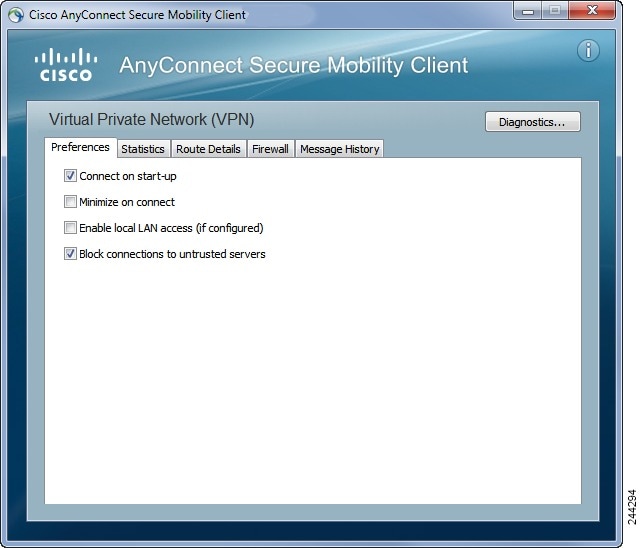- Cisco Anyconnect Download Windows 7 32 Bit
- Cisco Anyconnect Sbl Windows 10 Product
- Cisco Anyconnect Sbl Windows 10 Activation
Cisco AnyConnect Secure Mobility Client features are enabled in the AnyConnect profiles. These profiles contain configuration settings for the core client VPN functionality and for the optional client modules Network Access Manager, ISE posture, customer experience feedback, and Web Security. Enable SBL in anyconnect profiles. Both of them are in screenshot attached. But the problems is, although laptops in lab have been installed with SBL module, when we reboot laptop, there is an anyconnect icon called status, which spins and looks like trying to connect, but then falls back to windows login screen, instead of asking for.
Download and configure the new UCSD Virtual Private Network (VPN) AnyConnect client on your Windows 10 Desktop and Tablet for a conventional installation.

Cisco Anyconnect Download Windows 7 32 Bit
In the right place? If you only need to access common campus Web sites or remote desktop computing, use the VPN EasyConnect option. See instructions in Virtual Private Networks at UCSD.
Notes:
- You must log into your computer with administrator rights.
- You need your Active Directory (AD) username and password. If you don't remember your AD username or password, you can either reset it at https://adweb.ucsd.edu/adpass/ or contact your department's systems administrator.
- ACT is testing the support of SBL (Start Before Login) on Windows-based machines.
1. Download the UCSD VPN AnyConnect client
- Download the VPN AnyConnect client (UCSD login required).
- Click Run.
2. Begin the installation
3. Accept the license agreement
- Accept the terms, and click Next.
4. Continue the installation
- Click Install.
- You may be asked if you want to allow the following program to intall software on this computer
- Click Yes
- Click Yes
5. Finish the installation
Cisco Anyconnect Sbl Windows 10 Product
- Click Finish
- Restart your system
- Settings/Power/Restart
- Settings/Power/Restart
6. Run the AnyConnect client

- Click on the Windows Start Button (this will display the Windows Start Menu). Click on All Apps and choose the Cisco Folder. Proceed with selecting the Cisco AnyConnect Secure Mobility Client to launch.
7. Authenticate with UCSD VPN using DUO 2-Step Authentication
- In the first window, enter vpn.ucsd.edu in the box and click on the “Connect” button to the right
- A second window will appear. Select your desired connection profile from the Group drop-down menu:
- 2-Step Secured - allthruucsd – Route all traffic through the UCSD VPN. Use this when accessing Library resources and CMS website staging links. This is the preferred method.
- 2-Step Secured - split – Route only campus traffic through the UCSD VPN. All other traffic goes through your normal Internet provider.
- In the Username field, enter your Active Directory (AD) username
- In the Passcode field, use the following to authenticate through DUO (See Two-Step Login: VPN for further details):
- If you receive DUO push notifications on your mobile phone enter:
- yourADpassword,push
- If you receive a DUO phone call to authenticate, enter:
- yourADpassword,phone
- If you use a DUO token to generate a passcode enter:
- yourADpassword,6digitpasscodefromtoken
- If you receive DUO push notifications on your mobile phone enter:
- Click OK.
8. Disconnect
- Click on the Windows Start Button (this will display the Windows Start Menu). Click on All Apps and choose the Cisco Folder. Proceed with selecting the Cisco AnyConnect Secure Mobility Client.
- When the window appears, select Disconnect.
Cisco Anyconnect Sbl Windows 10 Activation
